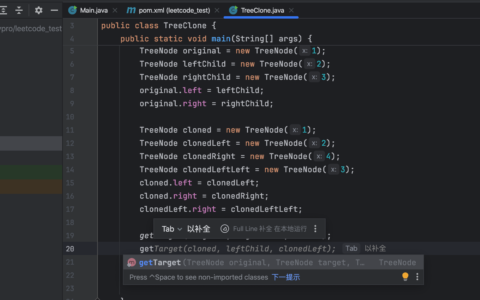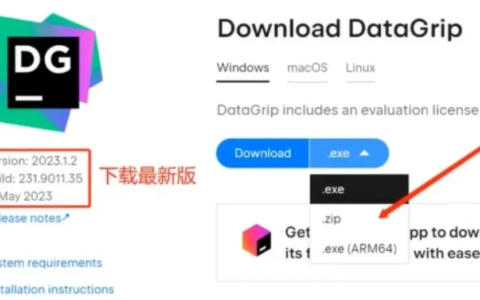大家看完call和apply的模拟实现方式,是不是对bind的模拟实现也跃跃欲试,这里将分享一个实现的过程,大家可以看看有没有值得借鉴的部分。
先看一下bind是什么?
var obj = {}; obj; typeof Function.prototype.bind; // function typeof Function.prototype.bind(); // function Function.prototype.bind.name; // bind Function.prototype.bind().name; // bound console.dir(Function.prototype.bind()); // 可以自行在浏览器控制台打印看看 // f bound () // length: 0 // name: "bound "
因此可以得出结论1:
1、bind是Functoin原型链中Function.prototype的一个属性,每个函数都可以调用它。
2、bind本身是一个函数名为bind的函数,返回值也是函数,函数名是bound 。(打出来就是bound加上一个空格)。 知道了bind是函数,就可以传参,而且返回值’bound ‘也是函数,也可以传参,就很容易写出例子2:
后文统一 bound 指原函数original bind之后返回的函数,便于说明。
var obj = { name: 'test', }; function original(a, b){ console.log(this.name); console.log([a, b]); return false; } var bound = original.bind(obj, 1); var boundResult = bound(2); // 'test', [1, 2] boundResult; // false original.bind.name; // 'bind' original.bind.length; // 1 original.bind().length; // 2 返回original函数的形参个数 bound.name; // 'bound original' (function(){}).bind().name; // 'bound ' (function(){}).bind().length; // 0
由此可以得出结论2:
1、调用bind的函数中的this指向bind()函数的第一个参数。
2、传给bind()的其他参数接收处理了,bind()之后返回的函数的参数也接收处理了,也就是说合并处理了。
3、并且bind()后的name为bound + 空格 + 调用bind的函数名。如果是匿名函数则是bound + 空格。
4、bind后的返回值函数,执行后返回值是原函数(original)的返回值。
5、bind函数形参(即函数的length)是1。bind后返回的bound函数形参不定,根据绑定的函数原函数(original)形参个数确定。
根据结论2:我们就可以简单模拟实现一个简版bindFn
// 第一版 修改this指向,合并参数 Function.prototype.bindFn = function bind(thisArg){ if(typeof this !== 'function'){ throw new TypeError(this + 'must be a function'); } // 存储函数本身 var self = this; // 去除thisArg的其他参数 转成数组 var args = [].slice.call(arguments, 1); var bound = function(){ // bind返回的函数 的参数转成数组 var boundArgs = [].slice.call(arguments); // apply修改this指向,把两个函数的参数合并传给self函数,并执行self函数,返回执行结果 return self.apply(thisArg, args.concat(boundArgs)); } return bound; } // 测试 var obj = { name: 'test', }; function original(a, b){ console.log(this.name); console.log([a, b]); } var bound = original.bindFn(obj, 1); bound(2); // 'test', [1, 2] bound.name; // 'bound' ?这一点怎么实现呢
我们知道函数是可以用new来实例化的。那么bind()返回值函数会是什么表现呢
var obj = { name: '轩辕Rowboat', }; function original(a, b){ console.log('this', this); // original {} console.log('typeof this', typeof this); // object this.name = b; console.log('name', this.name); // 2 console.log('this', this); // original {name: 2} console.log([a, b]); // 1, 2 } var bound = original.bind(obj, 1); var newBoundResult = new bound(2); console.log(newBoundResult, 'newBoundResult'); // original {name: 2} this指向了new bound()生成的新对象。
可以分析得出结论3:
1、bind原先指向obj的失效了,其他参数有效。
2、new bound的返回值是以original原函数构造器生成的新对象。original原函数的this指向的就是这个新对象,new做了什么?
1.创建了一个全新的对象。<br/> 2.这个对象会被执行[[Prototype]](也就是__proto__)链接。<br/> 3.生成的新对象会绑定到函数调用的this。<br/> 4.通过new创建的每个对象将最终被[[Prototype]]链接到这个函数的prototype对象上。<br/> 5.如果函数没有返回对象类型Object(包含Functoin, Array, Date, RegExg, Error),那么new表达式中的函数调用会自动返回这个新的对象。
所以相当于new调用时,bind的返回值函数bound内部要模拟实现new实现的操作。
// 第三版 实现new调用 Function.prototype.bindFn = function bind(thisArg){ if(typeof this !== 'function'){ throw new TypeError(this + ' must be a function'); } // 存储调用bind的函数本身 var self = this; // 去除thisArg的其他参数 转成数组 var args = [].slice.call(arguments, 1); var bound = function(){ // bind返回的函数 的参数转成数组 var boundArgs = [].slice.call(arguments); var finalArgs = args.concat(boundArgs); // new 调用时,其实this instanceof bound判断也不是很准确。es6 new.target就是解决这一问题的。 if(this instanceof bound){ // 这里是实现上文描述的 new 的第 1, 2, 4 步 // 1.创建一个全新的对象 // 2.并且执行[[Prototype]]链接 // 4.通过`new`创建的每个对象将最终被`[[Prototype]]`链接到这个函数的`prototype`对象上。 // self可能是ES6的箭头函数,没有prototype,所以就没必要再指向做prototype操作。 if(self.prototype){ // ES5 提供的方案 Object.create() // bound.prototype = Object.create(self.prototype); // 但 既然是模拟ES5的bind,那浏览器也基本没有实现Object.create() // 所以采用 MDN ployfill方案 https://developer.mozilla.org/zh-CN/docs/Web/JavaScript/Reference/Global_Objects/Object/create function Empty(){} Empty.prototype = self.prototype; bound.prototype = new Empty(); } // 这里是实现上文描述的 new 的第 3 步 // 3.生成的新对象会绑定到函数调用的`this`。 var result = self.apply(this, finalArgs); // 这里是实现上文描述的 new 的第 5 步 // 5.如果函数没有返回对象类型`Object`(包含`Functoin`, `Array`, `Date`, `RegExg`, `Error`), // 那么`new`表达式中的函数调用会自动返回这个新的对象。 var isObject = typeof result === 'object' && result !== null; var isFunction = typeof result === 'function'; if(isObject || isFunction){ return result; } return this; } else{ // apply修改this指向,把两个函数的参数合并传给self函数,并执行self函数,返回执行结果 return self.apply(thisArg, finalArgs); } }; return bound; }
注释中提到this instanceof bound也不是很准确,ES6 new.target很好的解决这一问题
function Student(name){ if(this instanceof Student){ this.name = name; console.log('name', name); } else{ throw new Error('必须通过new关键字来调用Student。'); } } var student = new Student('轩辕'); var notAStudent = Student.call(student, 'Rowboat'); // 不抛出错误,且执行了。 console.log(student, 'student', notAStudent, 'notAStudent'); function Student2(name){ if(typeof new.target !== 'undefined'){ this.name = name; console.log('name', name); } else{ throw new Error('必须通过new关键字来调用Student2。'); } } var student2 = new Student2('轩辕'); var notAStudent2 = Student2.call(student2, 'Rowboat'); console.log(student2, 'student2', notAStudent2, 'notAStudent2'); // 抛出错误
细心的同学可能会发现了这版本的代码没有实现bind后的bound函数的nameMDN Function.name和lengthMDN Function.length
Object.defineProperties(bound, { 'length': { value: self.length, }, 'name': { value: 'bound ' + self.name, } });
最后es5-shim的源码实现bind,直接附上源码(有删减注释和部分修改等)
var $Array = Array; var ArrayPrototype = $Array.prototype; var $Object = Object; var array_push = ArrayPrototype.push; var array_slice = ArrayPrototype.slice; var array_join = ArrayPrototype.join; var array_concat = ArrayPrototype.concat; var $Function = Function; var FunctionPrototype = $Function.prototype; var apply = FunctionPrototype.apply; var max = Math.max; // 简版 源码更复杂些。 var isCallable = function isCallable(value){ if(Object.prototype.toString.call(value) !== '[Object Function]'){ return false; } return true; }; var Empty = function Empty() {}; // 源码是 defineProperties // 源码是bind笔者改成bindFn便于测试 FunctionPrototype.bindFn = function bind(that) { var target = this; if (!isCallable(target)) { throw new TypeError('Function.prototype.bind called on incompatible ' + target); } var args = array_slice.call(arguments, 1); var bound; var binder = function () { if (this instanceof bound) { var result = apply.call( target, this, array_concat.call(args, array_slice.call(arguments)) ); if ($Object(result) === result) { return result; } return this; } else { return apply.call( target, that, array_concat.call(args, array_slice.call(arguments)) ); } }; var boundLength = max(0, target.length - args.length); var boundArgs = []; for (var i = 0; i < boundLength; i++) { array_push.call(boundArgs, '$' + i); } // 这里是Function构造方式生成形参length $1, $2, $3... bound = $Function('binder', 'return function (' + array_join.call(boundArgs, ',') + '){ return binder.apply(this, arguments); }')(binder); if (target.prototype) { Empty.prototype = target.prototype; bound.prototype = new Empty(); Empty.prototype = null; } return bound; };
2024最新激活全家桶教程,稳定运行到2099年,请移步至置顶文章:https://sigusoft.com/99576.html
版权声明:本文内容由互联网用户自发贡献,该文观点仅代表作者本人。本站仅提供信息存储空间服务,不拥有所有权,不承担相关法律责任。如发现本站有涉嫌侵权/违法违规的内容, 请联系我们举报,一经查实,本站将立刻删除。 文章由激活谷谷主-小谷整理,转载请注明出处:https://sigusoft.com/16701.html











